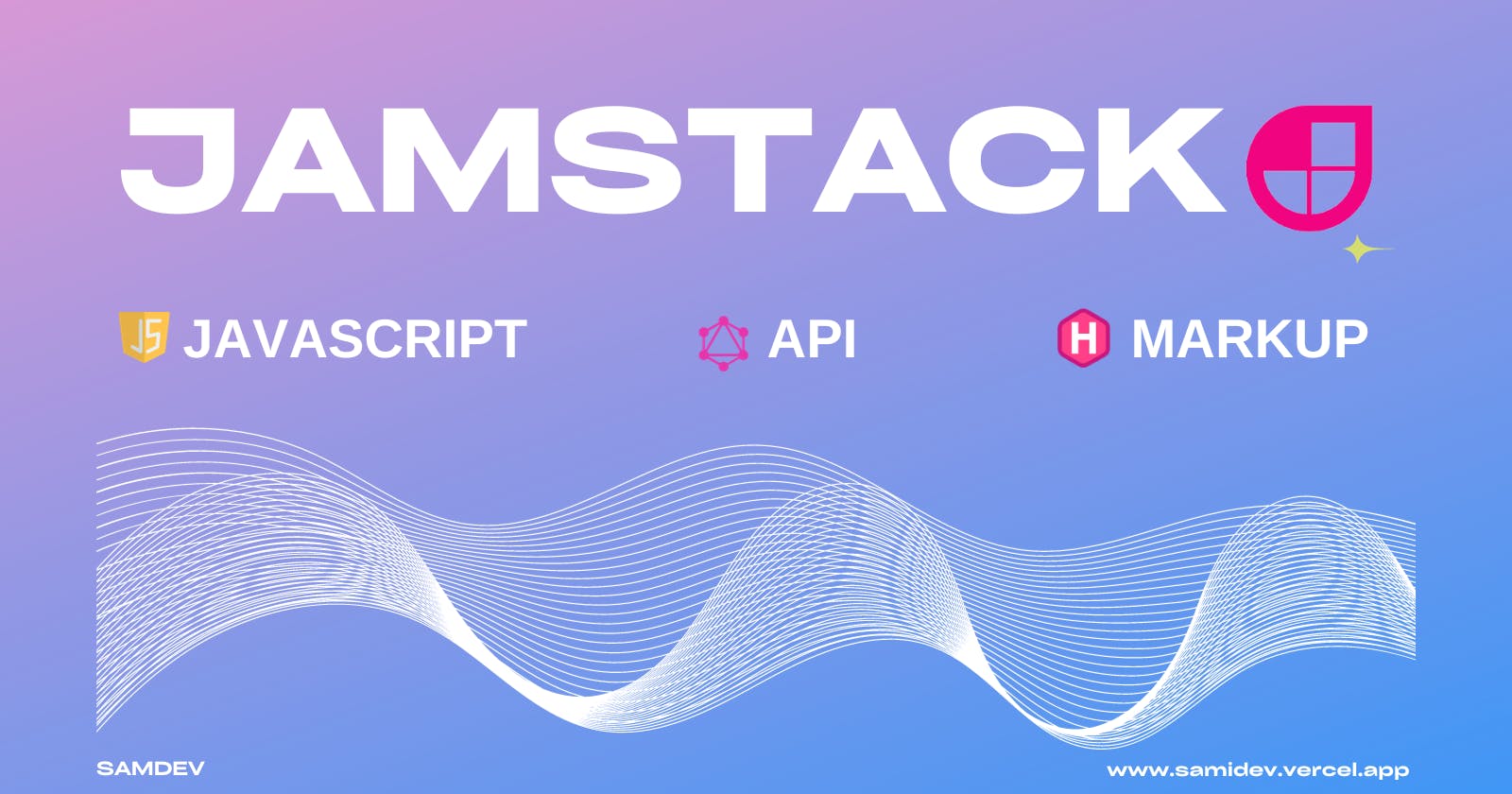JAM Stack
A contemporary web development architecture built on JavaScript, APIs, and Markup (JAM) is referred to as JAMstack. Jamstack is an alternative architecture for creating apps and websites rather than a particular technology or framework.
Working
Jamstack site separates the code (JavaScript), the site infrastructure (APIs), and the content (Markup) instead of utilizing a conventional CMS or site builder. All of these will be handled in a decoupled architecture with a distinct server-side and client-side division. Shifting as much of the load as possible from the server to the client is the core motivation behind creating Jamstack websites and applications. Thus, a significant portion of the waiting time associated with a server processing a request and returning it to the client is eliminated. It significantly reduces the number of submissions made to a server.
Why use the Jamstack architecture?
To be as server-less as possible, Jamstack should be used over a conventional method of website building. It entails removing as many jobs from the server as you can and pushing them to the client to enable fewer server requests, improved performance, and quicker load times.
That can only be accomplished by adopting a new perspective on the tech stack. Mentioning operating systems and databases is the traditional way to discuss a tech stack. With Jamstack, you concentrate on the level of the tech stack that is really the project's restriction.
Core parts
These constraints boil down to the three core parts:
1. To offer more capability and dynamic behavior, the browser uses JavaScript as the universal runtime layer.
2. APIs that can take the place of the database and retrieve all the information you need from the necessary services.
- Markup to supply the necessary HTML and website content.
Is my website considered to be on the JAMstack?
JavaScript, APIs, and Markup are the three components that make up JAM, but we didn't mention that you don't have to employ all three of them to qualify your website for the JAM moniker.
The Markup and the way you offer it is what determines everything. You could host a precompiled React app on S3 that communicates with your Rails app via a set of APIs rather than having your Rails app render your HTML for you.
But APIs are not even necessary. Not even JavaScript is required! JAMstack site serves HTML files without requiring pre-rendering (also known as pre-compilation) on the server at the time of the request.
Pros of using JAMstack
• Quick page loading
It matters to Google as well as to your website visitors. You should notice that you stop losing customers because they aren't abandoning your site due to poor performance.
Second, starting in May 2021, Google will incorporate Core Web Vitals (new performance metrics) into the ranking signals. Therefore, in the near future, the speed at which a website loads will have a significant impact on its ranking position.
• SEO effectiveness
Because static pages are quick, light, and simple for search engine crawlers to scan, Jamstack helps you rank higher.
Google rewards these behaviors with higher rankings in search results, which increases your competition and increases the number of people who actually search for you.
• Outstanding custom user experience
Making your best ideas a reality is now easier than ever possible, thanks to the integration of the Jamstack website with a headless CMS. You don't have to sacrifice performance, speed, or features you've always wanted to use to get the design you want.
• Future-ready
Utilizing Jamstack can help you stay ahead of the competition as technology is constantly evolving and changing. Being innovative allows you to relax, knowing that your website will still be functional in the future.
• Operates on all devices
All devices and screen sizes are fully compatible with Jamstack websites. As a result, you will convert users on both desktop and mobile.
• Security
Hackers could exploit no vulnerability because Jamstack sites don't have a direct connection to the database, user data, or other sensitive information. They resist being shot at.
Cons of JAMstack
• Coding might be necessary.
Depending on how they were created, updating your website or landing pages will be simple or difficult. If you don't know how to code, you might need the assistance of a qualified developer in some situations.
• Not entirely plugin compatible
A great user experience and freedom of customization often come at the expense of your ability to use plugins. Gatsby stands out as an exception, though.
• Not conducive to dynamic
For simple text and images, static pages, also known as Jamstack pages, are ideal. It will take more work from you if you want any dynamic features on your website. It's because the standard Jamstack architecture doesn't include dynamic features.
• Preview generation requires time
Because it is static, you must "build" it every time you make a change, which can be a real pain for larger websites.

